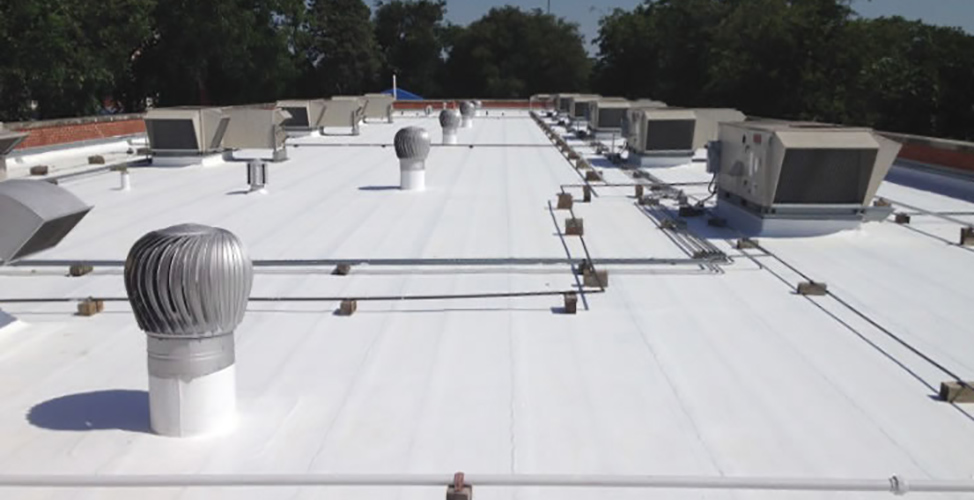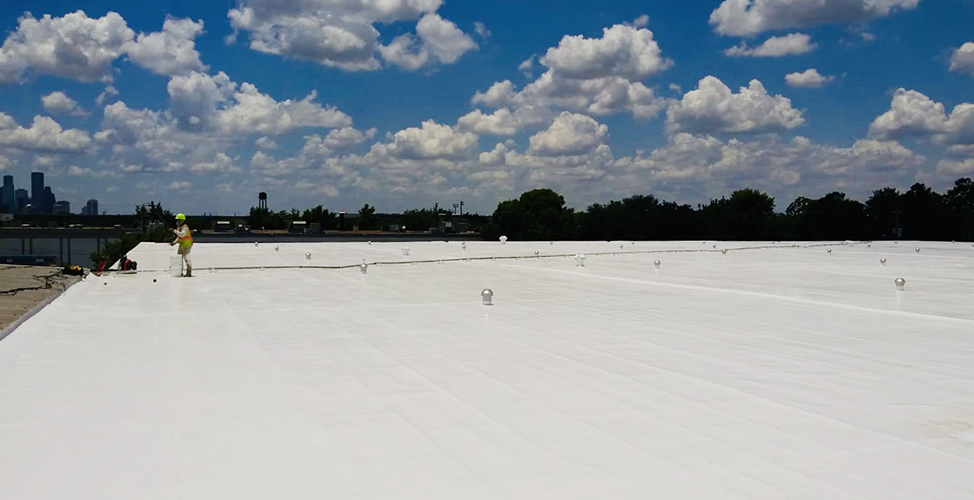The coatings can be applied over most traditional roofing materials including Felt, Asphalt, Bitumen, Metal and Concrete.
Fluid or liquid applied roofing membranes have been one of the fastest growing roofing systems in North America and Europe.
Benefits:
The process of liquid roofing provides a cost-effective method of making a new or existing roof waterproof. It can deliver up to 25 years performance depending on the coating system employed. Liquid roofing is less expensive than overall roof replacement in refurbishment situations.
Energy Efficiency
Liquid roofing provides significant reduction in roof surface and interior ambient temperatures. Contrary to conventional roofing materials (asphalt, bitumen, concrete and metal, which increase roof temperatures anywhere from 40 to 60 degrees Fahrenheit) liquid roofing, do to its high reflective properties will maintain the roof surface similar to the air temperature. AC units work more efficiently and interior temperatures will be lower thus providing lower energy consumption and less equipment failure on the roof.
High performance
Liquid roofing can be undertaken with high performance materials. Many of the products used in the liquid roofing process have been independently tested and their performance verified.
Safety
Unlike the installation processes of felt, asphalt and bitumen membranes, liquid roofing does not involve hot works. Hot work on roofs is an extremely high-risk process that poses a significant fire risk to contractors as well as the building and its occupants. The coating material used in the liquid roofing process is applied cold, thus negating any fire risk.
Encapsulation
When applied, liquid roofing systems encapsulate the surface they are applied to, preserving whatever is underneath and protecting it from weathering. This is especially desirable when dealing with asbestos roofs, as attempted removal of asbestos roofing can damage it. Using a liquid coating system instead seals the asbestos, therefore making disturbance of the material more difficult.
Easy Application
Rapid curing even in winter. Excellent adhesion to all kinds of surfaces and chemical resistant. High resistance to extreme temperatures. The membrane is completely waterproof and no heat or special equipment required.

